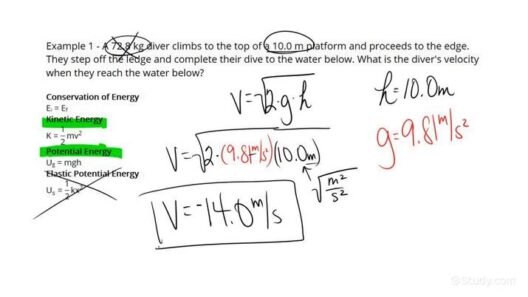Bumper car rides, a staple of amusement parks and carnivals, are not just a source of entertainment. They offer an insightful glimpse into the principles of physics, particularly the concept of kinetic energy and how it behaves during collisions. Understanding whether kinetic energy is conserved in bumper car collisions requires delving into the fundamentals of energy conservation laws and examining the specific dynamics of these playful vehicles.
Firstly, it is essential to define kinetic energy. Kinetic energy (KE) is the energy an object possesses due to its motion. The formula for calculating kinetic energy is straightforward: KE = 1/2 mv², where m represents mass and v symbolizes velocity. Consequently, any changes in the mass or speed of the bumper cars involved in a collision will directly affect the kinetic energy at play. However, not all collisions are created equal, and their classifications—elastic or inelastic—are fundamental to understanding kinetic energy conservation.
In collisions, the conservation of kinetic energy hinges on the type of collision taking place. An elastic collision is characterized by both momentum and kinetic energy conservation. In this scenario, the objects involved collide and rebound without losing any energy to sound, heat, or deformation. Conversely, an inelastic collision involves a loss of kinetic energy, as some of it is transformed into other forms of energy. Bumper car collisions typically fall into the category of inelastic collisions. This classification stems from the fact that when bumper cars crash into one another, they often crumple slightly, producing sound and heat, and may not rebound with the same velocity.
During a bumper car collision, the most evident outcome is that the kinetic energy of the system does not remain constant. Instead, part of the kinetic energy is converted into other energy forms. For instance, as the bumper cars collide, some kinetic energy dissipates as sound energy—think of the clattering sounds of the bumpers meeting. Furthermore, deformation of the cars occurs; this also absorbs energy, signifying that not all of the kinetic energy is converted back into motion post-collision.
Momentum, however, is conserved in these collisions. The law of conservation of momentum states that the total momentum before a collision must equal the total momentum after the collision, provided no external forces act on the system. This principle holds true for bumper cars, as long as the specific conditions—i.e., interactions only with one another, minimal external forces—remain in effect. While one car might come to a stop, another may continue moving. The momentum is transferred within the system, allowing some cars to move faster at the expense of others. However, the overall kinetic energy conversion means the initial speed and mass of the colliding bumper cars do not fully translate into an equivalent motion post-collision.
A detailed investigation into bumper car collisions reveals intricate dynamics influenced by various factors, including speed, mass, and angle of impact. The initial speed of cars is vital; faster-moving cars possess greater kinetic energy and will, upon collision, distribute this energy among the objects involved. The mass of the cars, although relatively uniform in designated bumper cars, plays a significant role. When cars of differing speeds collide, the variance in kinetic energy distribution can lead to distinct outcomes. Moreover, the angle of impact affects the resultant trajectories of the bumper cars; glancing blows result in complex interactions that further exemplify the nuances of energy transfer.
Furthermore, there are educational implications to consider when analyzing these collisions. Bumper car rides in amusement parks can serve as a practical demonstration of kinetic energy, momentum, and the laws of physics. By observing these collisions, participants can develop an intuitive understanding of energy principles, applying theoretical concepts to real-world experiences. This could lead to discussions about engineering designs, safety features, and the optimization of recreational vehicles for energy efficiency.
Additionally, it is important to address the environmental implications of ride operations, including bumper cars. While the energy consumption of a single amusement ride may be negligible in isolation, the cumulative effect of numerous rides operating simultaneously in theme parks can significantly contribute to overall energy usage. Finding ways to enhance energy efficiency through design and operation can mitigate some environmental impacts. Ideas for maximizing energy conservation may include utilizing renewable energy sources, implementing regenerative systems to recover energy, and improving the aerodynamic efficiency of bumper car designs.
In conclusion, the examination of kinetic energy conservation in bumper car collisions highlights a fascinating intersection between physics and amusement. While kinetic energy is not conserved during these inelastic collisions—where energy converts to sound, heat, and deformation—momentum remains a steadfast principle. Understanding these dynamics contributes both to educational awareness and potential advancements in sustainable amusement operations. Through awareness and innovative practices, the balance between fun and environmental responsibility can be achieved, enriching the amusement park experience while fostering ecological mindfulness.







